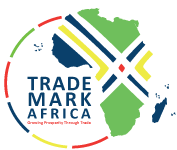The meeting comes at a time a new report shows US firms beat China in investments in Kenya, Uganda, Rwanda, Tanzania and Ethiopia — with an outlay of Sh803.4 billion ($7.8 billion) between 2014 and 2018.
The Ernst & Young (EY) Attractiveness Survey 2019 showed the cash invested by US companies was Sh113.3 billion, or 14.10 percent, more than $6.7 billion (Sh690.1 billion) by Chinese firms, according to the annual survey.
EY consultants, however, said the Chinese investments in the period could leafrog US’s if inflows into public sector, largely bilateral loans, are included. According to the EY report, the US firms invested in 109 projects, yielding 11,400 jobs, while the Chinese funded 56 projects with resultant jobs estimated at 39,200 in the four-year period. Chinese firms have in recent years firmed their grip on cash-rich infrastructure contracts in Kenya, including various roads and the multi-billion shilling standard gauge railway (SGR).
Experts had earlier said the African Growth and Opportunity Act (Agoa), which gives a range of exports from sub-Saharan Africa including Kenya duty-free access to the US, is unlikely to be a top priority for President Donald Trump given its negligible impact on US jobs, raising questions about his administration’s focus on Africa.
But Washington is equally understood to be keen to reassert itself and intensify its engagement with Nairobi at a time other nations, including the UK, Russia and Japan, are courting Kenya. Last month President Kenyatta met Russian President Vladimir Putin as Moscow wooed Kenya, which it deems a strategically important bilateral partner in the East African trading bloc.
Kenya is a likely beneficiary of another US export window being considered to replace the Agoa after seven years, experts have hinted. Agoa expires in 2025.
The Agoa plan has been dominated by export of textile and apparel, which accounts for 65 per cent of the total exports.
Kenya ranks among the top suppliers of apparel to the US, having exported $340 million (Sh3.4 billion) worth of such goods to the US in 2017.















